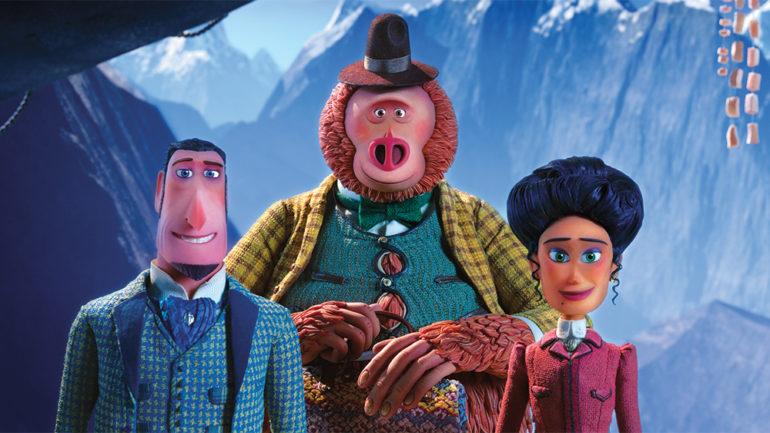Tech Puts a Point on Laika’s Hand-Crafted Image
By Karen Idelson
LOS ANGELES (Variety.com) – It all started with the nose of Sir Lionel Frost, the puffed-up investigator voiced by Hugh Jackman in Laika’s stop-motion feature “Missing Link.” Director of rapid prototyping Brian McLean was looking at the concept art for the then-upcoming feature and saw that helmer Chris Butler envisioned something so pointy for this character’s nose that he didn’t think ’s current system could make it happen.
But Laika has long been in the make-it-happen business, from the very beginning when its stop-motion films distinguished the Portland-based studio from the pack. McLean also didn’t want to ask Butler if he could “reimagine” Lionel and the other characters so that they’d be easier to create.
“The goal was to get to the point where we would not be limited at all, to not have the technology limit us, and create the director’s vision for the film in both the character design and the characters’ performance,” McLean says. “It was a series of things that fell into place that allowed us to achieve our goal that we have been striving for since the inception of the RP [rapid prototyping] department on ‘Coraline.’”
McLean began searching for a printer and a printer driver that could provide the kind of precision and control needed for “.” Laika has always sought out cutting-edge 3D printing tech and developed relationships that give them early access so they could experiment and test hardware and software. His research led him to the Fraunhofer IGD Cuttlefish 3D printer driver and high-end Stratasys J750 3D printers. Together they created more than 106,000 extremely specific color 3D faces for the film, which gave the finished product such a smooth look that it was often mistaken for CG .
On previous films, character faces were pre-printed and then used in a series of combinations to make the expressions. But this combination of tech, used together for the first time on this film, also revolutionized workflow at Laika, last Oscar nominated for “Kubo and the Two Strings.”
“In the end, we realized that, because of printing technology advancements, it was actually affordable to just be as specific as we wanted with the official performances,” says Benoit Dubuc, facial animation supervisor. “So, when Chris [Butler] had a note, we had absolutely no problem addressing it. He’d preview the work in CG and we’d be able to iterate and iterate. One of the key things that Chris wanted was to make sure that these characters are humanized as possible and that their interactions were as naturalistic as possible, and we talked about nonverbal communication, meaningful longing glances, revealing facial twitches — that that type of stuff.”
McLean is still looking for the next big thing — software, hardware, materials they can use to create the faces for Laika’s next film. The usual NDAs keep him from naming names at this point.
“I think naïveté is a blessing and a curse for us,” McLean says. “I think we failed to realize just how much of a chunk we were biting off with changing the infrastructure. I sort of was, at one point, joking that it was like we were trying to replace the entire engine and chassis and our Formula 1 racecar while it’s in a pit stop. We were just coming off ‘Kubo’ and the success of being nominated for a visual-effects Oscar. And then we’re realizing, oh my gosh, we’re supposed to be shooting in a few short months. And this thing that we thought was just going to be somewhat plug and play, since we know 3D printing, it turned out that every step of the pipeline needed to be reworked and rebuilt.”

